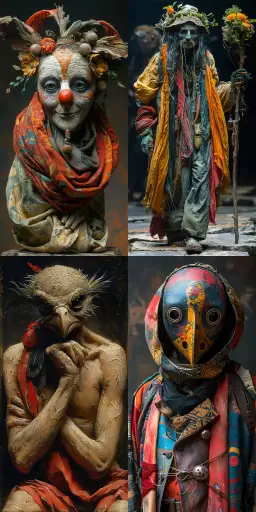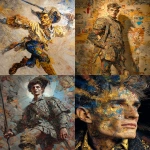Explore the Best AI Image Gallery

AIs Creative Canvas: Reshaping the Graphic Design Landscape
The world of graphic design is on the cusp of a revolution, fueled by the burgeoning power of artificial intelligence (AI). No longer confined to the realm of science fiction, AI is rapidly integrating into creative workflows, empowering designers with unprecedented tools and capabilities. From generating stunning visuals to streamlining complex tasks, AI is poised to reshape the very fabric of graphic design as we know it.
A New Era of Creative Possibilities
AI-powered design platforms are emerging as game-changers, offering a plethora of features that augment human creativity. These platforms leverage machine learning algorithms to analyze vast datasets of images, typography, and design trends, enabling them to generate original designs, refine existing concepts, and even predict aesthetic preferences.
Unleashing the Power of Automation
One of the most significant impacts of AI in graphic design is automation. Repetitive tasks such as resizing images, creating social media graphics, or generating variations of a logo can now be handled efficiently by AI algorithms, freeing up designers to focus on higher-level creative endeavors. This increased efficiency not only saves time and resources but also allows designers to explore more innovative and conceptual ideas.
Democratizing Design
AI is also playing a crucial role in democratizing design. User-friendly AI-powered tools are empowering individuals with limited design experience to create professional-quality graphics. This opens up new avenues for self-expression and allows businesses of all sizes to leverage impactful visuals without relying on expensive design agencies.
Navigating the Ethical Landscape
As with any transformative technology, the integration of AI into graphic design raises important ethical considerations. One key concern is the potential for bias in AI algorithms. If trained on biased datasets, AI systems may perpetuate existing societal stereotypes or generate designs that are insensitive or discriminatory. It is crucial to ensure that AI tools are developed and deployed responsibly, with a focus on fairness, inclusivity, and transparency.
Copyright and Originality
Another ethical challenge concerns copyright and originality. As AI systems become increasingly capable of generating original content, questions arise about ownership and intellectual property rights. It is essential to establish clear guidelines and legal frameworks that address these complexities and protect the rights of both human creators and AI developers.
Future Trends in AI-Powered Design
The future of AI in graphic design is brimming with possibilities. We can expect to see:
- Personalized Design Experiences: AI will enable the creation of highly personalized designs tailored to individual preferences, demographics, and contexts.
- Seamless Collaboration: AI-powered tools will facilitate seamless collaboration between designers, clients, and stakeholders, streamlining the design process and fostering innovation.
- Real-Time Design Iteration: AI will enable real-time design iteration, allowing designers to experiment with different concepts and refine their work instantly.
- Generative Design Systems: AI will power generative design systems that can automatically create comprehensive design systems, encompassing everything from logos and typography to color palettes and user interfaces.
Conclusion
AI is undoubtedly transforming the graphic design landscape, empowering designers with new tools and capabilities while raising important ethical considerations. By embracing responsible development practices and fostering open dialogue, we can harness the transformative power of AI to create a future where creativity flourishes and innovation knows no bounds.
](https://images.ai-img.art/thumbnails/150/3a60737a5b67fa252207ad1ae6db245a26284f53fb5846996bb34515b39ff269.webp)








](https://images.ai-img.art/thumbnails/150/1614d64dd7156c95db952258978be809eb3db8cea4453fec69c49cbdfe63fa94.webp)
](https://images.ai-img.art/thumbnails/150/8c3bd422d50d35735d8fb33bd314a79e30e5b150129d5d09bdad822a2007593f.webp)

